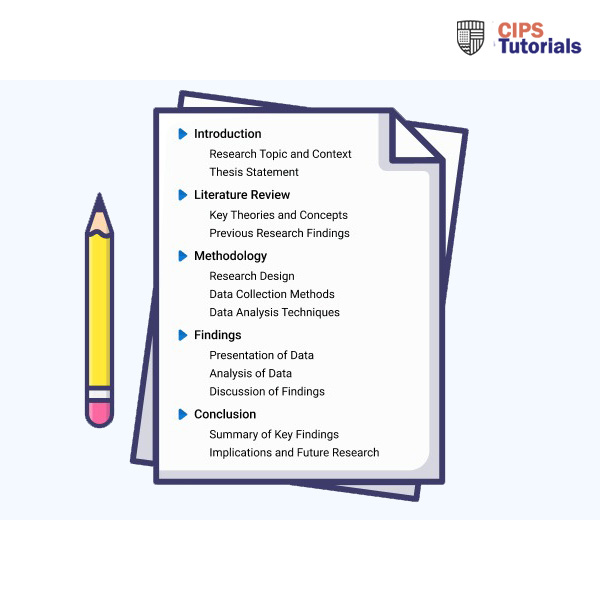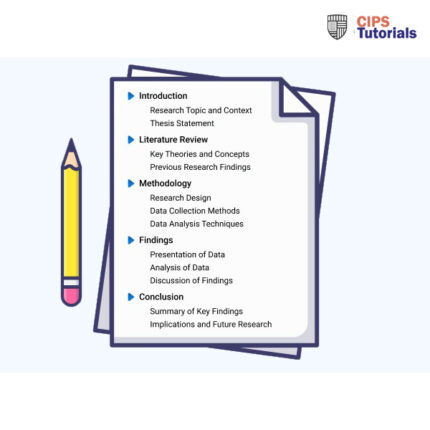-50%
Solution
AC 1.1 Competitive labour market:
When qualified workers are in high demand but few are available, competitive labour markets develop (CIPD, 2022a). Therefore, it is more important than ever for businesses to find ways to attract and keep top people. Job security is dictated by the equilibrium between the supply and demand for labour. Employers take the initiative to position themselves in competitive marketplaces by branding themselves as employers, managing their image as employers, and cultivating the reputation as employers of choice. To differentiate themselves from rivals, companies like SunEnergy require a well-thought-out strategy. My analysis of SAP’s strategy will help SunEnergy better understand strategic positioning. SAP is a famous worldwide software corporation that is known for its employer branding and for being an excellent place to work.
Employer Branding
Strategic employer branding helps SAP become a more desirable workplace (Lybrand, 2018). Sharing its purpose and fundamental principles helps SAP convince potential employees that it is an excellent workplace. To build a powerful employer brand via many platforms, SunEnergy might showcase its sustainability goals, innovative technology, and employee achievements.
Employer of Choice
SAP’s goal is to build an attractive employer brand that will entice potential employees. According to Hub (2023), it emphasises fair compensation, opportunities for career growth, a healthy work-life balance, and a positive work environment. In order to establish SunEnergy as an employer of choice, the company might use renewable energy projects to show its dedication to sustainability. To recruit and retain top talent, it is helpful to offer training programmes, flexible work hours, and competitive remuneration.
Organisational Image
The market’s trust in SAP is sustained by the company’s CSR initiatives, operational excellence, and financial transparency (Lievens, 2017). Participating in community service programmes, forming partnerships with respectable organisations, and going to industry events are all things SunEnergy can do to gain the trust and respect of potential employees. Crucial as well are effective internal and external communications.
AC 1.2 changing labour market conditions in the UK
Labour Market: In the labour market, both employers and employees engage in wage negotiations and scheduling negotiations. Wages rise and competition for workers gets fierce in competitive labour markets, according to the CIPD (2017). In a “loose labour market,” according to CIPD (2022b), when there are more qualified applicants than available positions, wages are lower, and competition for top talent is less fierce. Employers in a “tight” labour market may choose to boost pay and promotion prospects in order to attract and retain top talent.
To foretell upcoming changes in the UK job market, one can employ a PESTLE analysis. Just to illustrate how the present state of the labour market is influencing resource allocation choices, here are two Examples:
Integration of cutting-edge technology: Work is changing due to robots, AI, and automation. Jobs and skills are changing. Works (2017) shows how it affects skills and employment. Technology use in the employment market depends on industry and geography. The McKinsey Worldwide Institute finds that 22% of economies use digital labour tools. The ascent will be tremendous. Technology will require 50% of the workforce to be reskilled in the next decade, according to the World Economic Forum (Sneader & Singhal, 2021).
The need to train employees on new systems is one way in which technological progress impacts how a business uses its resources. It might be necessary to invest in automation and AI, retrain employees, and recruit technological experts.
Political Movements: Settlement and minimum wage laws can affect the labour market, suggest Maida and Peri (2018). Immigration reforms will effect several industries’ job availability. Alex (2023) claims immigration policies raise wages but decrease employment. Raising the minimum wage may help low-skilled persons find work.
Government policy may affect resource allocation. USCIS(2020) suggests that companies may need to pay more in employee training to replace skills lost to harsher immigration regulations.
1.3The function of employers ,Government and trade unions
The global energy sector in the UK is improving its workforce sustainability by preparing its workers for the skills of the future. In this endeavour, alternative trade unions, corporations, and the government all play crucial roles.
Government Role: Legislative support can boost renewable energy skills. As Foxon et al. (2005) explained, governments can enact laws incentivizing sustainability R&D. The UK developed frameworks distributing money to training initiatives like its Green Jobs Taskforce. Through collaborations like SunEnergy partnering with the Skills for Jobs program, companies can acquire funding for workforce development. Aligning legislative agendas with emerging industry requirements pre-empts future skill shortages. With policy, financial incentives, and education cooperation, governments can better equip organizations and individuals with the competencies to thrive in a transitioning energy sector.
Functions of Employers: Working with other energy-related organisations might help SunEnergy fill up common skill gaps, share best practices, and create industry-specific training programmes. Business associations like Renewable and the Energy Institute provide opportunities for companies like SunEnergy to network, learn from one another, and establish industry-wide workforce plans.
Trade unions promote workers’ rights, educational opportunities, and fair working circumstances, as stated by Stone and Gavin (2020). If SunEnergy wants to make sure that its programmes to improve employees’ skills really meet their needs, it can consult with trade unions. By taking part in staff planning, change unions can assist SunEnergy in recognising the growing skill and ability gaps and guaranteeing a reliable workforce.
2.1 Workplace Planning.
Successful staffing, according to the CIPD (2021), is knowing what a company requires in terms of workforce now and in the future.Job supply can be forecast via workforce planning. Critical are workforce evaluations, skill gap identification, and talent source identification (SHRM, 2015).
The two sources of supply, external and internal, are both covered.
One approach to utilising internal sources of supply to fulfil labour demands is by promoting and developing current personnel (Lumen, 2019).
Pros: This method helps to keep knowledgeable employees around, gives them opportunities to grow in their careers, and maintains organisational expertise. Using internal resources instead of external ones reduces the time and money needed to train new staff.
Cons: It may increase the bar for skill levels and restrict the variety of personnel.
Direct hiring, agreements with schools, and recruitment firms are all examples of outside sources of talent.
Pros: By exposing oneself to new information and ideas, one is able to broaden their horizons and strengthen their skills. It has the potential to give reliable data and aid the business in responding to market shifts (Lumen, 2019).
Cons: Problems with integration and cultural fit, longer onboarding periods, and higher hiring costs are all possible outcomes of outsourcing.
External and internal sources that are well-balanced can be beneficial. Organisations may aggressively seek out external talent while simultaneously fostering internal talent in order to fill critical skill shortages or meet increasing demand.
AC 2.2 The effectiveness of techniques
Promotion and demotion rates: Promotion and demotion rates might be helpful when building a workforce. Staff are motivated and retained by higher advancement rates. As Sun Energy moves towards more sustainable energy sources, it must take into account other critical workforce planning factors beyond promotion rates, which can be an effective inducement to recruit and retain talented individuals. Promoting rates alone cannot account for changing external hiring demands and new technology talent shortages. A corporation undergoing strategic transition must consider promotion rates and other trends to organise personnel effectively.
Staff turnover: To identify staff retention issues, workforce planners must know turnover rates. Sun Energy’s turnover rates may reveal their struggles to retain key staff. However, turnover alone may not explain staffing needs. Understanding the causes of turnover, such as career stagnation, and distinguishing voluntary from involuntary departures is vital. To support personnel planning during the company’s shift, evaluate turnover along with skills demand estimations and changing job needs.
Evaluation of a critical incident: By analysing patterns, this strategy can assist find the reasons behind major events.
Sun Energy’s people practice team may benefit from critical incident analysis to learn from past incidents and prevent future ones.Reactive data may not be enough to estimate workforce demands. The resource implications of the energy transition should be assessed using this method plus a more comprehensive analysis of industry trends, skill needs, and changing job opportunities.
2.3 Approaches
Planning for Successions
The CIPD (2020) states that this is the process for delineating the responsibilities of significant personnel in order to ensure that critical tasks may be carried out in their absence.
Appraisals: According to Breakthrough (2017), the term “appraisal” in succession planning means assessing an employee’s overall performance and their ability to identify potential leaders inside the firm for the future.
Efficient use: Finding talented people who want to improve their careers through assessments is vital to succession planning. LinkedIn (2023) states that performance reviews can analyse employees’ skills, advancement prospects, and overall performance. We can identify leadership and managerial talent for succession planning using this data.
Emergency preparation: According to Base (2020), is the process of planning for and responding to unexpected events or conditions in a company’s operations. Evaluations are used in the “SunEnergy” backup plan to discover devoted personnel who want to progress their careers and step up quickly. SunEnergy can assess staff performance, talents, and goals to decide who can take on more responsibility in an emergency or fill critical positions.
Efficient use: Proactive strategies build internal talent pools and reduce workplace dangers. Training ensures that SunEnergy always has a skilled crew to handle unexpected situations, ensuring smooth operations with little downtime.
AC 2.4 Selection and Recruitment Methods
Assessment of Social Media and Job Boards for Employee Recruitment
| Selection Methods | Strength | Weakness | Effective |
| Job Boards | More people see postings, which draws more diverse candidates. Allows hiring skilled and experienced workers | Recruiters in competitive marketplaces often experience information overload. Reviewing several resumes might be laborious. | Permits effective matching of work needs with applicant skills. |
| Social Media | The platform displays the company’s values. LinkedIn and Twitter profiles might reveal a candidate’s professional persona. | The information applicants offer is hard to verify. Possible bias from online content. | Gives an idea of how well-mannered and networked a candidate is. |
Assessing of Interviews and Job References as Methods of Selection
| Selection Methods | Strength | Weakness | Effective |
| Interviews | Allows rapid assessment of candidates’ interpersonal skills and company cultural fit. In-the-moment evaluation and follow-ups provide more information (SHRM, 2019). | The results of interviews could be skewed by subjectivity and bias. There is no assurance that questions and assessments will be fair. laborious, particularly when conducting interviews with numerous rounds. | Helps shed light on conduct, body language, and nonverbal clues. |
| Job References | Obtains first-hand accounts from former employers or coworkers to validate credentials and performance (Warren, 2015). | Potential workers can choose their references. Legal restrictions may prevent employers from disclosing some information (Miller, 2019). Current and future employment needs may differ. | Gives helpful insight into the candidate’s dependability, collaboration, and fit for the position. |
These evaluations cover all the bases when it comes to the pros and cons of employing various methods of recruiting and selection, such as social media, job boards, interviews, and references.
3.1 Management Style and Motivational Issues
Turnover
Please click the following icon to access this assessment in full

